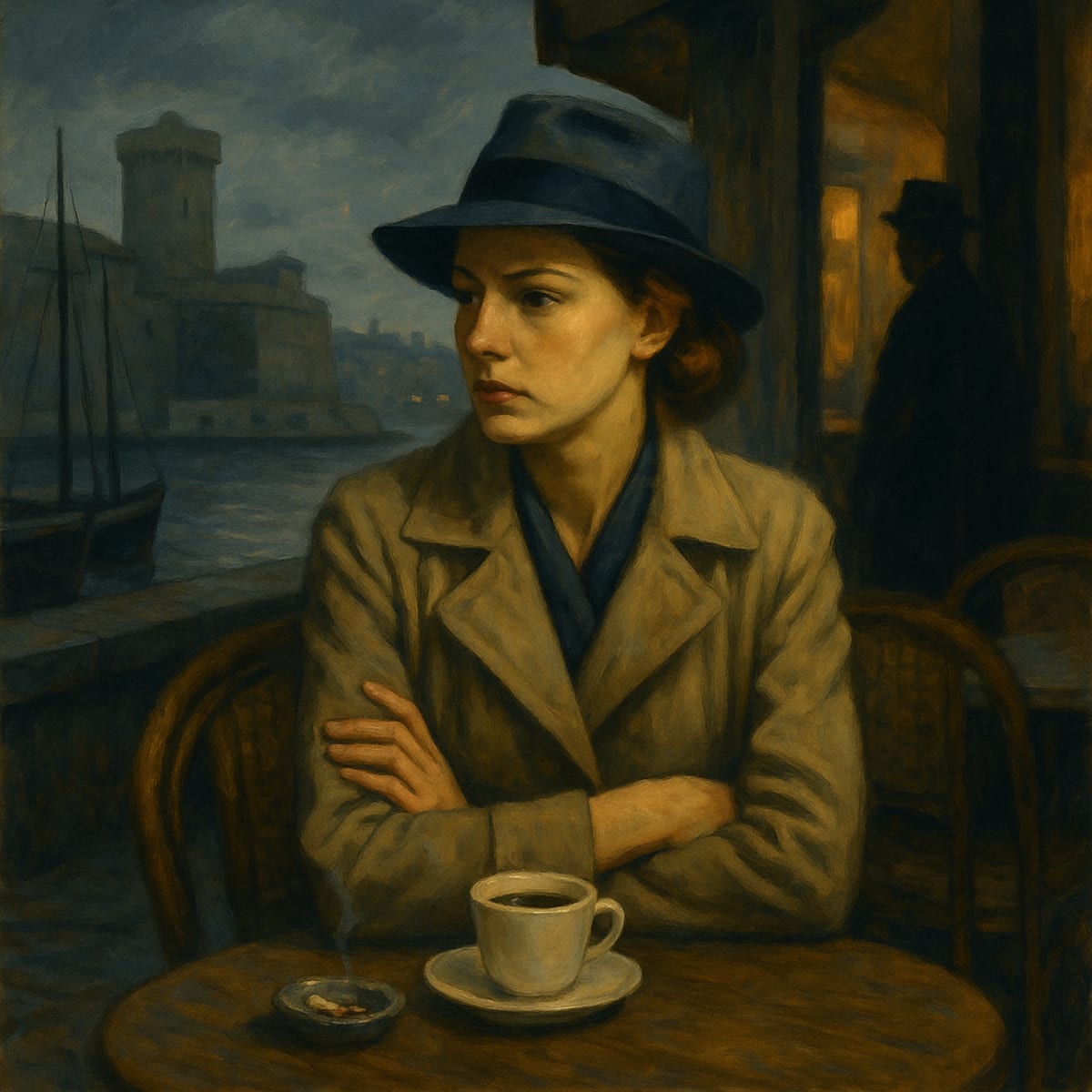In the shadows of Nazi-occupied France, while curfews silenced the streets and fear choked the air, a different kind of war was unfolding, one without uniforms, one fought in whispers and shadows. If you're reading The Midnight Series, you’ve already stepped into this hidden world. But behind the fiction lies a true story, stranger and braver than any novel: the birth of the Réseaux de Résistance, France’s underground intelligence networks.
Not All Resistance Carried a Gun
When most people think of the Resistance, they picture the Maquis, those guerrilla fighters hiding in the forests, blowing up train tracks and ambushing convoys. But the Maquis were only half the story.
The other half wore no uniforms. They carried no rifles. Instead, they carried secrets.
These were the men and women of the Réseaux, the Resistance Networks. Their battleground was the city. Their weapons? Radios, false papers, memory, and unshakable nerves.
They didn’t just resist. They listened, watched, and waited. Then, they passed information, sometimes through coded messages on scrap paper, sometimes whispered to a stranger on a train platform. Every bit of intel they sent could shift the course of the war.
Who Dreamed Up These Networks?
The idea didn’t start in a boardroom or a military office, it began with a voice. On June 18, 1940, from exile in London, General Charles de Gaulle broadcast a call for resistance over the BBC. Most French people never heard it live, but those who did, or who caught wind of it later, felt something stir. France had not surrendered. Not really.
At the same time, across the Channel, British intelligence, especially a shadowy organization known as the Special Operations Executive (SOE) had a bold plan: “Set Europe ablaze.” They needed people on the inside. Locals. Patriots. Operatives who could live unnoticed in occupied cities and pass back secrets.
That’s how the Réseaux were born: a collaboration between Free French fighters, British and Allied intelligence, and thousands of ordinary people who decided they wouldn’t stay silent.
What Did the Réseaux Actually Do?
Each network had its specialty. Some focused on espionage, collecting maps of German bunkers or tracking troop movements. Others were sabotage units, trained to cut communication lines or derail trains at just the right moment.
Many more specialized in escape lines, sheltering downed Allied pilots and guiding them through occupied territory to safety in neutral Spain or Switzerland.
Here’s the twist: these networks weren’t ragtag gangs. They were organized like spy thrillers, cell-based, meaning no one knew more than they had to. That way, if one person was captured and tortured, the rest of the network might survive.
Famous examples include:
- Réseau Alliance, which gathered intelligence under the cover of a veterinary service.
- Réseau Comète, run by a young Belgian woman, Andrée de Jongh, which smuggled hundreds of Allied airmen to freedom.
- Réseau Prosper, one of the largest SOE-backed networks, tragically betrayed and dismantled in 1943.
Real Risks, Real Heroes
The characters in The Midnight Series might be fictional, but their courage is modeled on the real people who risked everything. These weren’t soldiers. Many were teachers, housewives, priests, or postmen. They died in prison camps. They disappeared without a trace. But while they lived, they lit fires in the dark.
Some networks operated for years without being discovered. Others were blown apart within months by betrayal or bad luck. Still, they kept forming, new cells, new codenames, new missions.
They were part of a different kind of army, an invisible one. And when the Allies finally landed on the beaches of Normandy and Provence, it was the Réseaux who passed along the signals, sabotaged the rails, and guided the way.
Why It Matters to the Story
If you're drawn to stories of secrets, of people who fight back without ever firing a shot, then you’re already walking in the footsteps of the Réseaux. The tension that fills every page of The Midnight Series, the fear of discovery, the whispered message, the radio operator in a hidden attic, is drawn from what really happened.
These were the spies. The saboteurs. The messengers. The invisible threads that helped hold France together when it threatened to unravel.
And they were real.
Like the characters in my novels, the members of the Réseaux didn’t always wear their heroism on their sleeve. But make no mistake: they were some of the bravest souls of the Second World War.
Want to learn more about the real-life heroes who inspired The Midnight Series? Stay tuned for more behind-the-scenes history, coming soon.
Copyright © Tom Kane July 2025
To read more about The Midnight Series, please click here.
